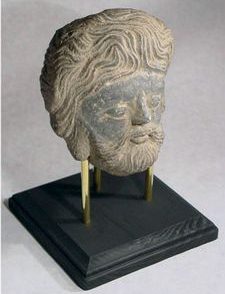Whether you are an artist, or an art collector, sending contemporary works of art out of Italy can be a nerve racking experience. What can be even worse is trying to bring ones own artwork into Italy from non-EC countries.
To export paintings and other artworks one must go to the Soprintendenza in Palazzo Pitti to obtain a nullaosta or permit of clearance. The Soprintendenza seems to change names frequently thanks to the whims of the legislators but in Florence it is commonly called the Belle Arti.
Exporting contemporary artworks from living authors is simpler than sending antiques, as if any bureaucratic situation in Italy is easy. Before 1999 even contemporary artworks were subject to inspection by the Belle Arti. One had to take the original piece in its packaging to the inspection hall, unpack it, have it viewed, pack it back up and tie a string around the whole parcel making an artful knot that was sealed with a piece of lead and crimped with the Belle Arti’s seal and then pay a fee. It was a complicated affair trying to make one piece of string go around the whole package blocking all sides from fraudulent intrusion. Fortunately this came to an end for contemporary art works and artists no longer have to waste their mornings carrying paintings and sculptures to Palazzo Pitti to be viewed.
Currently Italian customs requires one to execute a self-declaration in order to export a contemporary artwork. An example of the self-declaration for exportation can be obtained from the Ufficio d’Esportazione (Exportation Office) in Palazzo Pitti. It is there that you will have to return with two copies each of: two colour images of your artworks, a photocopy of valid identification, and the self declaration. To go to the Ufficio d’Esportazione in Palazzo Pitti, one must first obtain a pass from the Carabinieri station beyond the gate to the left of the Palace just inside the Boboli garden. The Ufficio d’Esportazione is open weekday mornings except for Mondays and Wednesdays. The self declaration is free of charge but you will have to wait at least a week for them to process it.
Once you have the validated declaration, you can export your artworks with any courier or regular mail service. Most artworks are too large to be sent by regular mail. You can ask your courier to obtain the nullaosta from the Belle Arti and therefore avoid going yourself but the courier will most likely charge you for this service. If you are not an artist and have bought a painting from a gallery, the gallery should take care of the nullaosta.
Artworks that have been sold or that are not intended to return to Italy must be sent with an invoice of sale if you are an artist with an Italian Tax ID number. If you are an artist and do not have an Italian Tax ID number you can export your artworks with a proforma invoice.
If you are sending artworks to an exhibition in a non-EC country and plan that these artworks return, then it is best that you obtain a Temporary Export Licence, or “T.E.” This is important because if you send your artworks without a T.E., the Italian customs will charge you 30% of the declared value upon re-entry. The T.E. has to be prepared by a customs agent for a fee. The T.E. can be renewed for two years and has to be renewed every six months. The cost of the renewal is approximately €120.00 for each time. If you do not renew the T.E. the Italian customs will contact you at the beginning of the following year asking that you account for the artworks in question. You can choose between three options: renew the T.E.; transform the temporary exportation into a definitive one, thus invoicing the sale of your artworks; or have your artworks returned. Each of these choices requires that you pay a customs agent for their services. Customs agents want specific documentation in order to perform a temporary export licence.
When you send your artworks with a T.E., you must be very careful to conserve the original papers that you are consigned by the Italian customs. You will need these papers to renew the T.E. or to transform the temporary into definitive. If you send your artworks with a T.E. you will discover that some couriers will not handle these shipments. Usually couriers have their own customs agents that can help you.
As daunting as the currents rules may appear, shipping artwork today is much easier than it used to be!





